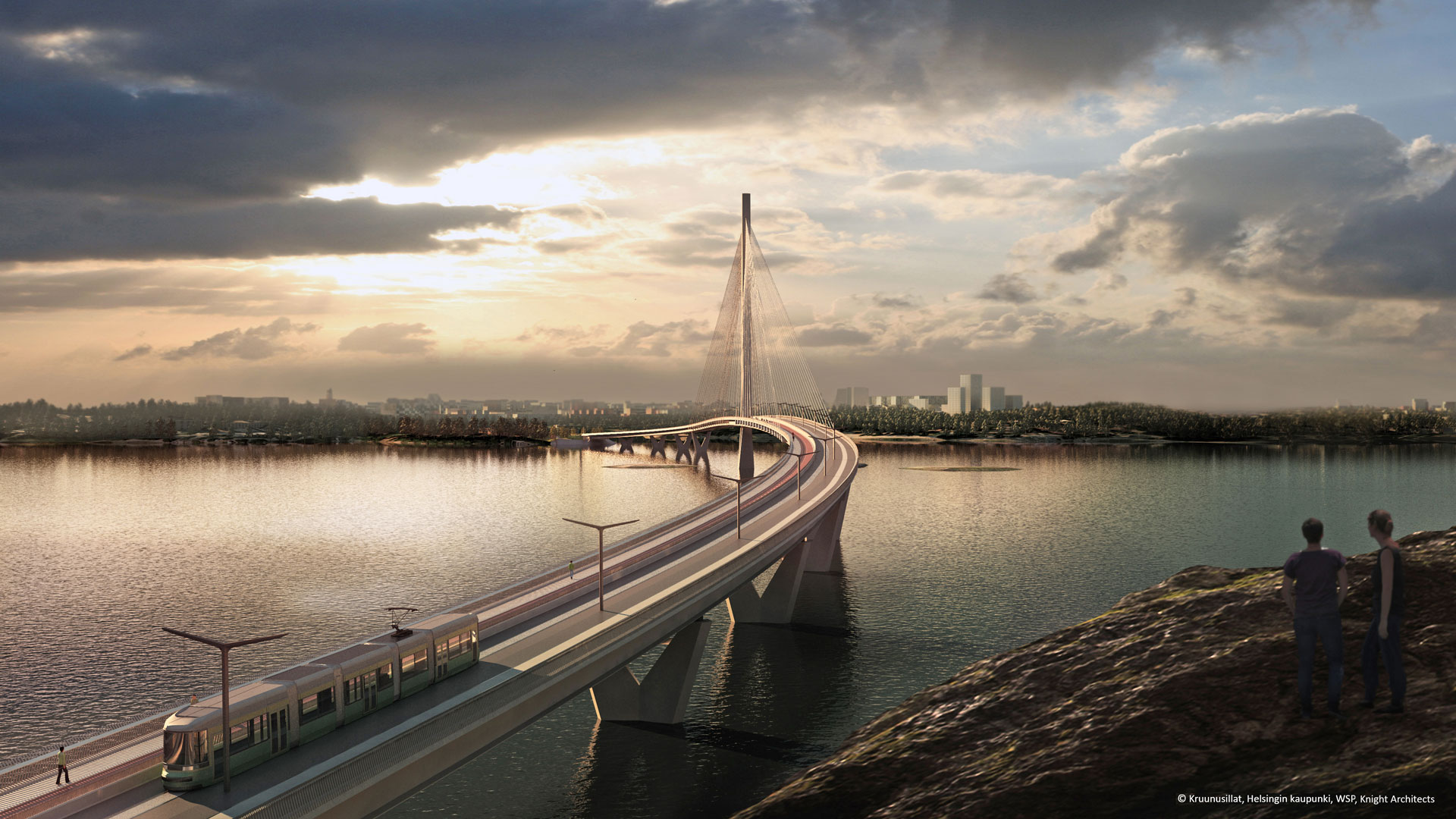Infrastructure construction has caught up with and surpassed building construction when it comes to the systematic use of BIM, at least in Finland. A shining example is the Kruunusilta bridge, under construction in Helsinki.
Kruunusilta won this year’s Tekla BIM Award in Finland, indicating that the project has used BIM exceptionally well.
An innovative bridge project
The City of Helsinki organized a design competition for Kruunusilta (“Crown Bridge”) in 2013. The winning proposal was a joint effort of two companies, the UK-based Knight Architects and WSP Finland. The unique bridge will serve tram, cyclist, and pedestrian traffic.
Construction on the bridge commenced in autumn 2021 and will be completed in 2026. Two main contractors are working on the site: Kreate and YIT Infra.
The 1.2-kilometer-long Kruunusilta will be the tallest bridge structure in Finland. The distinctive diamond form of the 135-meter-tall (443 feet) pylon will be an instantly recognizable symbol of this historic capital city.

BIM from the get-go
The City of Helsinki required the use of BIM in the project. Modeling is essential to both the construction and operations phases.
Contractors received model-based material to review during the market dialogue and bidding phases. During the construction planning, the model integrated different design disciplines and fit the bridge into the urban environment.
Kreate’s project management and quality systems are linked to the model and data collected from the site, making real-time schedule tracking possible.
The client has monitored the quality of the contract and the completion of structural components using the as-built model. The BIM model acts as a visual interface to the entire bridge’s quality data.
BIM for installation
The installation planning has been done with exceptional precision based on the information model. Each installation phase and temporary structures have been virtually modeled to facilitate measurement, quality control, and phase planning.
Parametric design and transparent and standardized data transfer have saved time. In addition, modifying the design even during construction has been quicker and more accurate than traditionally.
The tall deck structures were installed using a big sea hoist. Each sea lifting was created in the BIM model on a scanned seabed.
Data for the next 200 years
Seamless digital collaboration in a BIM-centric project is critical. This project has used Trimble Connect as the hub for model-based information management. It ensures timely access to design and quality management information for all participants.
The Kruunusilta bridge’s planned lifespan is 200 years. From that point of view, flawless as-built information is critical. Hopefully, the carefully executed BIM workflows will ensure that.
View the original article and our Inspiration here


Leave a Reply